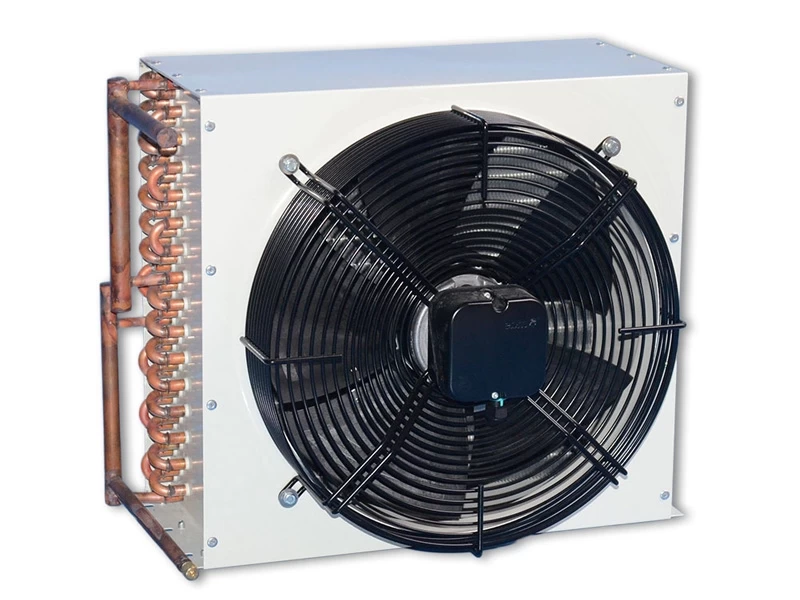


The refrigerant condenses in the condenser by dissipating heat to the external environment. Thus, the gas (superheated steam) coming from the compressor with high pressure and temperature is converted into saturated steam and then saturated liquid at constant pressure in the condenser. While this process takes place on the inside of the pipe, the fluid on the outside takes the latent heat of condensation and carries it outside.
Condensers are designed in different types depending on the application areas. The most important distinction is determined by the fluid that will transfer the heat to the external environment: air or water. In general, the heat transfer properties of water are better than air. Therefore, water-cooled condensers come to the fore in theory. However, in practice, problems such as the availability of water and, if there is water, the need for a water cooling tower and plumbing make it necessary to reevaluate the issue.



The device that transfers the heat from the refrigerant vapor, which is compressed by the compressor in the refrigeration cycle and whose pressure and temperature is increased, to the outside environment and thus enables the condensation of the steam, is called an air-cooled condenser.

Water Cooled Condensers are more complex than air cooled condensers. They must be used together with water cooling towers or dry-wet/dry coolers. The hardness of the water necessitates the cleaning of the water side at certain intervals or the use of chemicals to prevent petrification.


They are condensers made on the basis of the cooling effect of air and water together. Evaporative condensers are used less and less due to their maintenance and service difficulties, their rapid contamination, and their proneness to frequent breakdowns. Evaporative condensers are generally placed outside the building and on the roof, but by placing them inside the building, air inlets and outlets can also be provided with channels made of galvanized sheet metal.